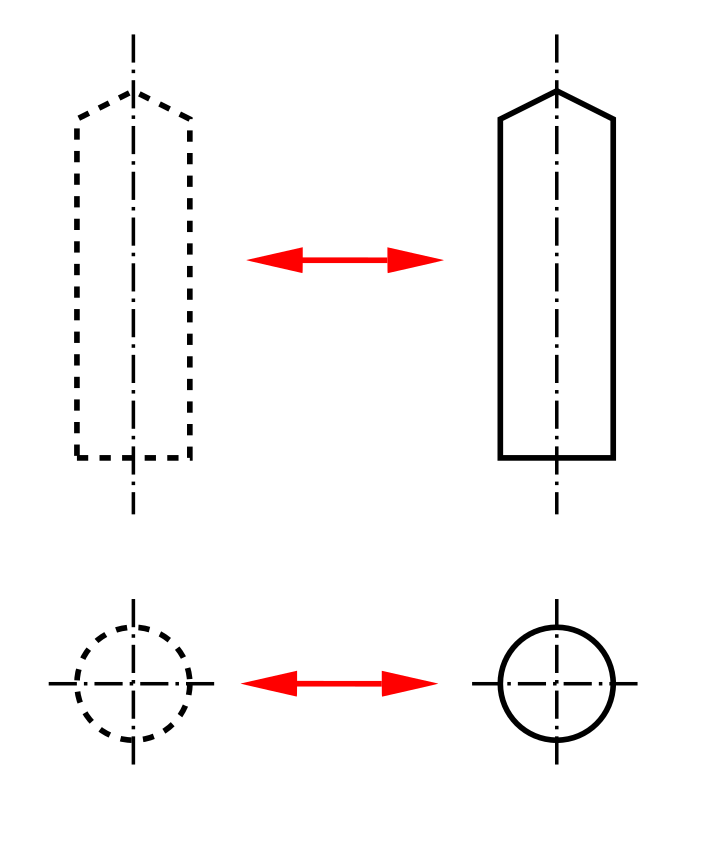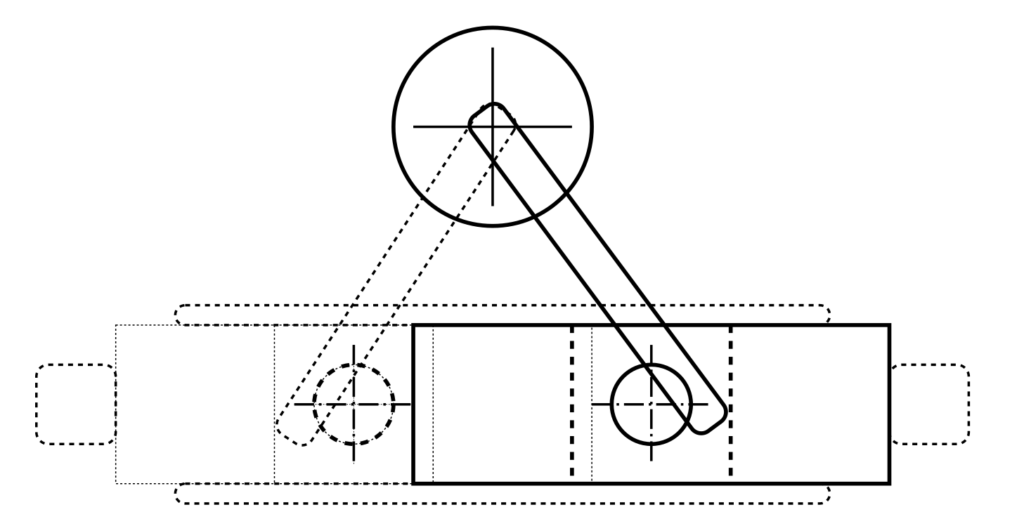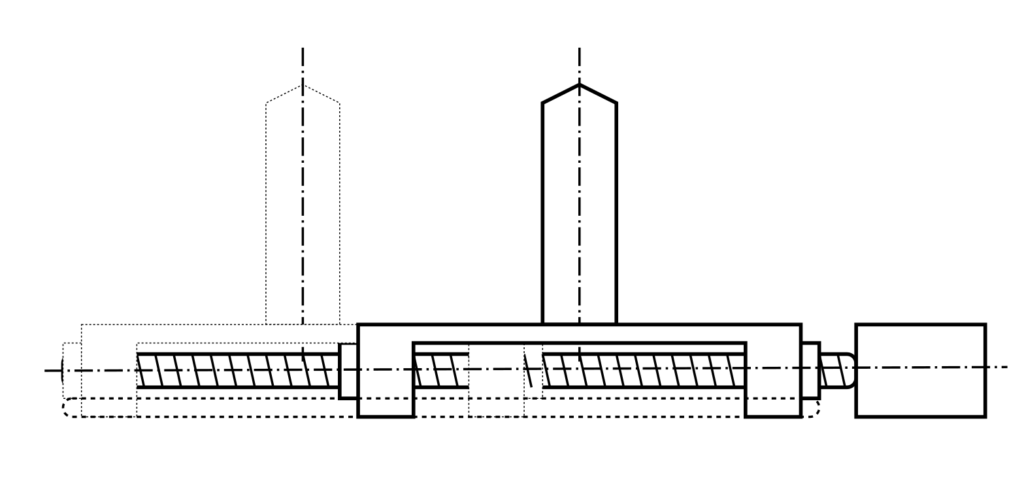This article shows how to use the benefit analysis in the design process for decision making in design. The Excel document used here can be downloaded at the bottom of the page.
The following example is chosen for illustration:
The problem
A partial function is required for a machine. A stop pin is to be moved between two different positions.

Solution variants
In the course of the construction, several possible solutions for fulfilling this partial function were created. These are
Variant 1

The pin stands on a guide carriage. The guide carriage has a central recess into which a lever controlled by an electric motor engages. By turning the motor, the slide is moved between the two end positions.
Variant 2

The pin is placed on a guide carriage that is moved between the two end positions with a spindle drive.
Variant 3

The pin stands on a guide carriage and is moved between the two end positions by a pneumatic cylinder attached to the side.
Establishing the evaluation criteria
In order to carry out the benefit analysis, criteria must be found that are to be evaluated. Here you can find a collection of typical evaluation criteria in mechanical engineering. In the present case this should be:
- Low probability of failure
- Simple energy supply
- Low maintenance
- Low operating noise
- Low number of components
Since the criteria are not all equally important, a weighting must be determined. The easiest way to do this is through a pairwise comparison.
The following figure shows the structure of the benefit analysis and the weighting determined in this case by the pairwise comparison.

It makes sense to include the respective solution variants as pictograms in the table for the benefit analysis, since the comparative assessment can then be carried out more objectively and faster. To do this, however, it is necessary that all variants that are to be compared with one another are at a comparable level of maturity of the design.
The result of the respective variant results from the product of points and weighting.
The point scale for evaluation can be freely selected, it is only important that it is defined how the scale is to be interpreted.

An absolutely correct assessment of the respective variant with regard to an evaluation criterion is not necessary; a comparative assessment of the variants is sufficient. After all variants have been assessed, the benefit analysis looks like this:

Solution variant 1 received the most points. However, the difference to variant 2 is very small, so that it may make sense here to keep both variants in the game and evaluate them again later.
The benefit analysis in in the design process is a helpful method that can be implemented quickly. The comparative evaluation facilitates and accelerates the decision-making process, while these decisions are clearly documented.
The Excel template
The benefit analysis shown above is available for download as an Excel file here.

